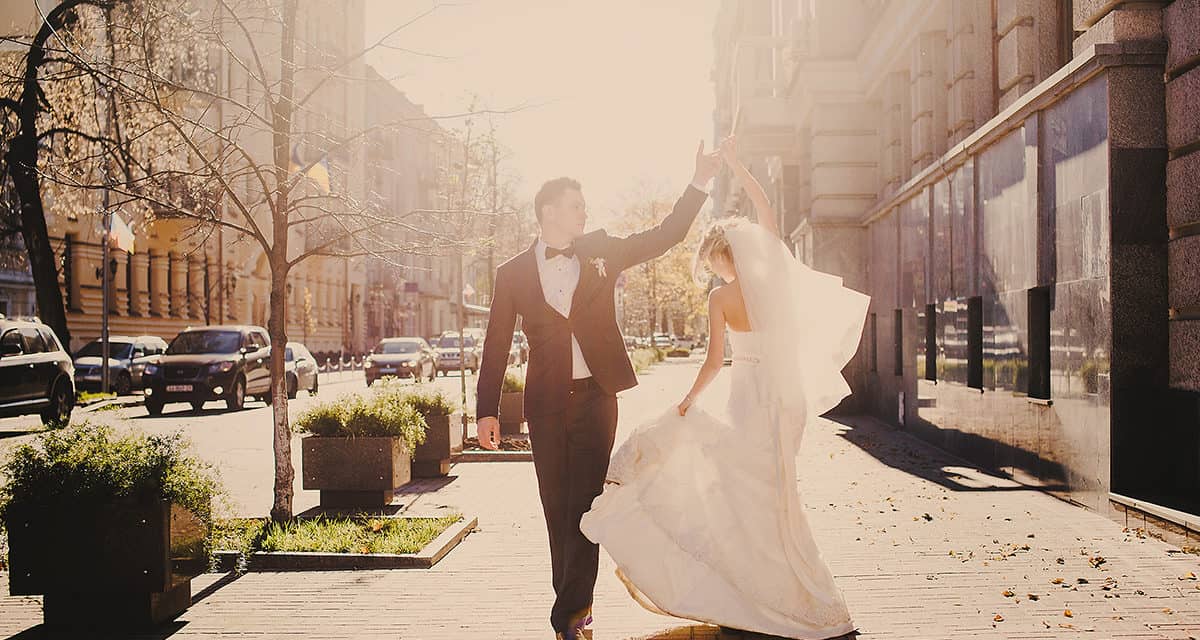Once upon a time, taking wedding pictures was for many photographers the pit of their profession. But not any more. It’s now a profitable and artistically satisfying niche. And you too can make it big in the field of Wedding Photography.
But to join this clique you’ll need more than camera skills. You’ll need business savvy too. So how can you compete?
Those taking their chance to get creative in wedding photography are from all ages and stages; youngsters just beginning, and seasoned professionals changing the emphasis in their career. Worse, many of the competition think even a camera manual is too much learning. Isn’t this stuff just point-and-click?
The digital age of photography has meant that anyone can grab a camera and take multiple pictures of the next wedding they attend – and upload them too, unfortunately. There’s no barrier to entry. You don’t even have to know what an f-stop is – or so it seems. Make up a quick website so you can display your rapidly taken and ill-focused images…
So where’s the opportunity? If you want to be successful in any field, you need a realisation that if it looks easy, all those wanting an easy ride will jump on. Photography is no exception to this. But that increased competition has a good side. With so many offering inferior work, you have a chance to really shine if you’ll take the time to do a few basic things right. And this isn’t a training course. It’s just some ideas to augment your own. Never switch your own brain off because someone else seems to know the magic answers. However, there are some little-known realities about business in general which when applied to the niche of wedding photography, will help you stand out from the rest:
- Don’t stress if your résumé isn’t packed with breathtaking images.
Of course, you need to show you can take nice pictures. But you will be chosen based on the style you show in the images you offer – and your manner, your attention to detail, the way you present, and of course your price (usually this matters much less than people think). Sometimes it’s not the actually the couple who will make the decision. And it may be the confidence you project during your interview that gets you in. Yes, you should certainly continue improving your technical skills. But recognise that you might be hired for your vision and ability to understand what a client wants. And if you’re new, without a shiny reputation, then focus on what you are good at, and what you DO have.
- In photography, your image is more important than your images.
Your clients will spend thousands just to look ‘perfect’ on the day. As their prospective photographer, you have to critically consider all aspects of your brand in the same light. In photography, the image is indeed everything, in more ways than one. Yes, everything matters, from the greetings on your voicemail and website, to what you wear. It should all be designed to help your client to better communicate with you. Language matters too. “Photography Agreement” doesn’t sound like they’ll need a lawyer to check it – and you. However, “Wedding Services Contract” does rather ask for that.
- Set expectations early on.
Show them your work/style. Find out what look they want to achieve, how many photos they want, what important items or people need inclusion and ask how the end result will be used. If you’re charging them for the event, make sure you have the agreement of price in place up front.
- Preparation is the key to a successful execution.
It’s a good plan to visit the wedding location prior to the day. Weddings aren’t like football team pics. Those can be redone if the shots don’t turn out. But you can’t replay a wedding celebration. Attend the rehearsal if possible. Sure, most won’t do this, and sometimes it isn’t possible. But if you’re just starting out, you want to impress – and you do this by the way you handle the details. Do you have a babackuplan if your camera fails, or if it gets damaged? Where will you keep spare memory cards?
- Make a list – and carry it – of who and what to shoot.
Ask your clients ahead of time about the shots they particularly want. And who they want pictures of with whom. Discuss possible shots such as ring close-ups, backs of dresses, shoes, flowers, table settings, menus etc – these all help give your presentation album something extra. Then get the couple to arrange for a ‘shepherd’, or two, to act as marshals. They can be the ones responsible for ensuring that those who need to be in the shots are there. This will take the pressure off you.
- Know thine equipment
Silly questions – but have you rehearsed with your gear? And do you know all the ins and outs of the camera you carry? Wedding pictures are often taken in variable light, with little time to plan shots. You need to know how to get the best from the equipment you’re using. For example, should you use RAW or JPEG mode – and when? Weddings with lots of white and black outfits in poor light may need you to play with the exposure and white balance during processing – RAW mode will help with this considerably. Can you do continuous shooting? Sometimes the second shot that your camera takes automatically is the one that catches everybody relaxed and smiling. And can you turn that mode off quickly? You might need to take pictures during a service in silence. Have you learned about fill flash? Creating some highlights can make your images sparkle.
- Expect to see the unexpected – and then take the picture!
Yes, Mr Murphy never misses a wedding. Inevitably…the best man will lose the ring, the rain will NOT hold off, the flower girl will drop her basket and then she’ll get the giggles. These incidents can engender panic, or unease in the participants, and yet often it’s these photographed moments that provide some of the best memories, as they represent the unusual and the unplanned. So do be on the watch, and capture these. You might get some lovely images that add to the quality of your product – and portfolio.
- Have Fun doing it
A wedding is one of those events in life that uplifts us all, with its inherent emphasis on love and hope for the future. So enjoy the occasion, and the more fun you have, the less like work it will seem, even after twelve hours on your feet. And if you’re having fun, your clients will be relaxed, and you’ll get better images. Happy shooting!
-From the NZIBS Archives. Reproduced for educational purposes.










